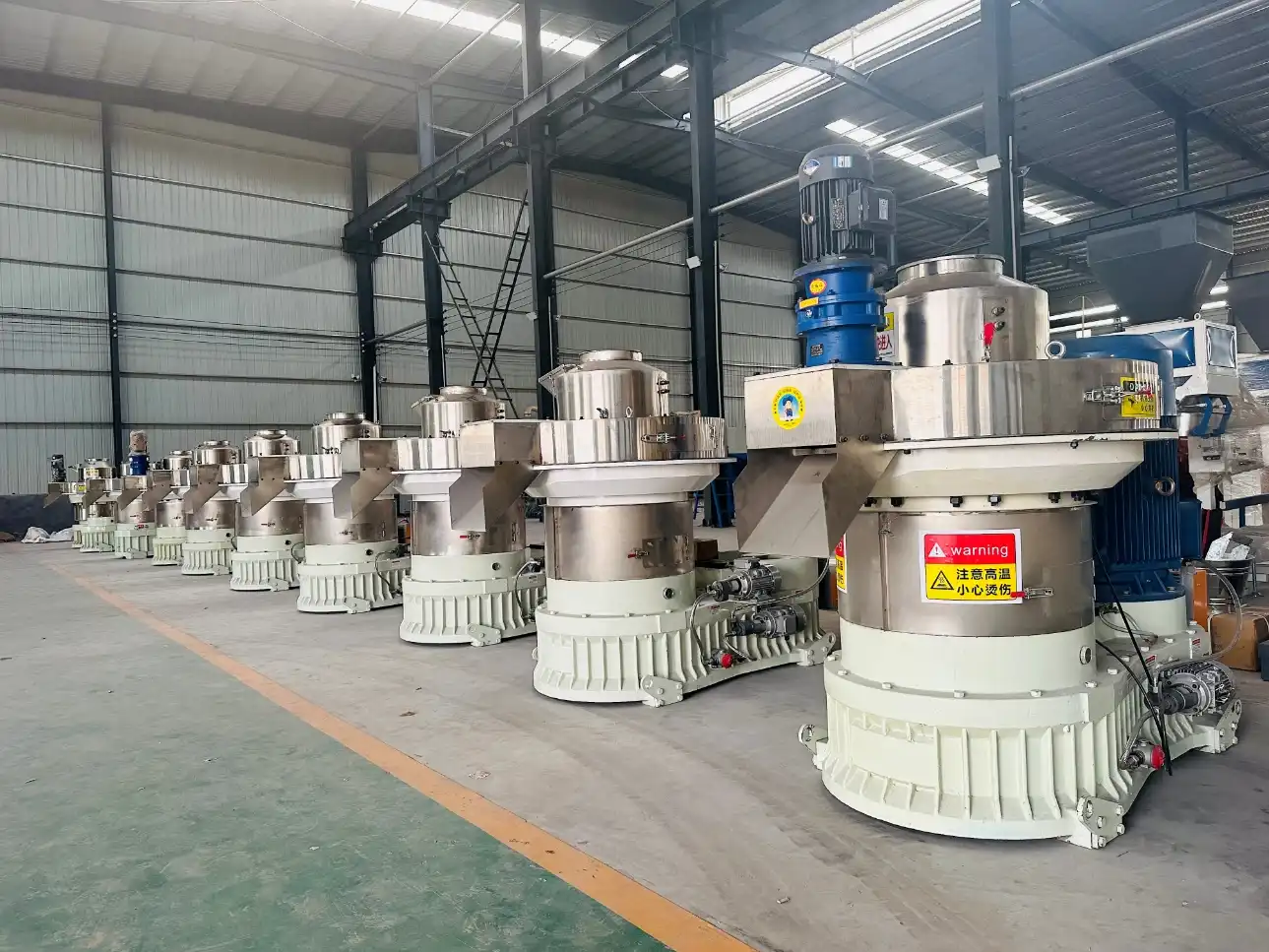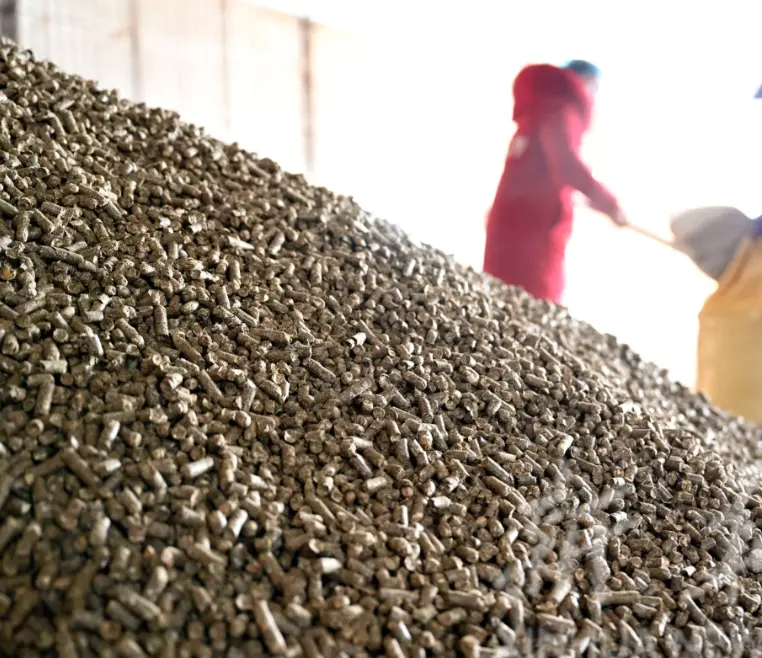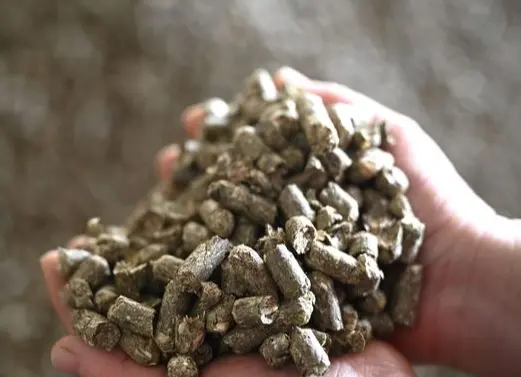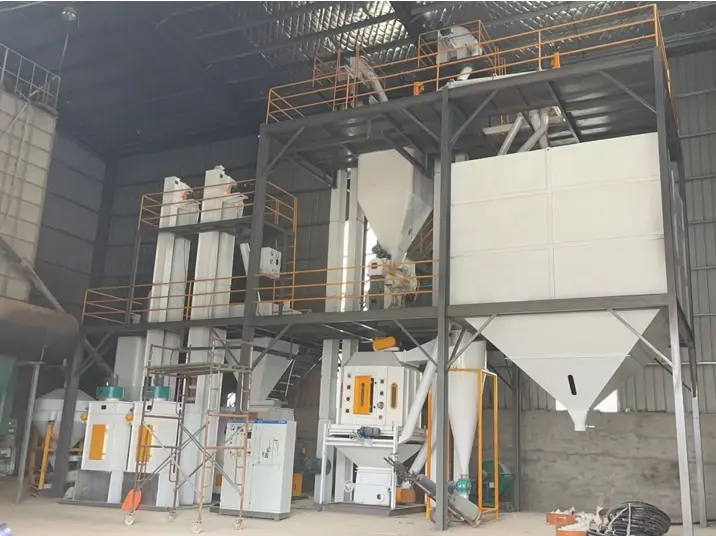-
Pellet mill production line
Title: Introduction to Feed Pellet Machine Production Line
Pellet mill production line In modern agricultural practices, the production of high-quality animal feed plays a pivotal role in ensuring the health and productivity of livestock. The evolution of feed pellet machines has revolutionized the way feed is manufactured, providing efficiency, consistency, and nutritional balance.
The feed pellet machine production line is an amalgamation of sophisticated machinery and processes that ensure the creation of premium feed pellets for various animals, meeting their nutritional requirements effectively.
Feed processing plant, ring grinding pellet machine, feed processing equipment, large feed equipment, animal feed processing plant, large feed pellet processing equipment, feed pellet production equipment,

### The Machinery Involved:
The Pellet mill production line typically consists of several key components:
1. **Raw Material Handling:**
Raw materials such as grains, soybeans, corn and other additives are processed and stored in silos or bins. These materials undergo a preliminary cleaning process to remove impurities and ensure quality feed production.
2. **Grinding and Mixing:**
The raw materials are ground into a suitable particle size and then mixed with other essential components like vitamins, minerals, and fats. This stage is critical in achieving a balanced and uniform blend that meets the nutritional needs of the target animals.
3. **Pelletizing:**
The mixed materials are then fed into the feed pellet machine, where they undergo the pelletizing process. This machine compresses the mixture into small, cylindrical shapes using heat and pressure. The die and rollers within the machine shape the pellets, ensuring consistency in size and density.
4. **Cooling and Screening:**
The freshly formed pellets emerge from the pellet machine at an elevated temperature. They are then cooled down using a cooler to stabilize their structure. The cooled pellets undergo screening to remove fines and ensure uniformity in the final product.
5. **Packaging and Storage:**
Once the pellets are cooled and screened, they are ready for packaging. Automated systems fill bags or containers with the pellets, which are then sealed to maintain freshness. The packaged feed is stored in warehouses before distribution.
Advantages of feed pellet machine production line

### Benefits of Pellet mill production line:
– **Precision and Consistency:** The automated processes in the production line ensure that each pellet contains a precise blend of nutrients, leading to consistent quality feed.
– **Enhanced Nutritional Value:** The pelletizing process improves the digestibility of nutrients, enhancing the overall nutritional value of the feed.
– **Cost and Time Efficiency:** The streamlined production line reduces manual labor and time, increasing overall efficiency and reducing production costs.
– **Customization:** The flexibility of the production line allows for the creation of specialized feeds tailored to different animal species and their specific nutritional requirements.
### Conclusion:
The feed pellet machine production line stands as a testament to technological advancements in the agriculture industry. Its ability to create high-quality, nutritious feed in a systematic and efficient manner has significantly contributed to improving animal health, productivity, and ultimately, the quality of animal-derived products. As the demand for superior animal nutrition continues to rise, the evolution of feed pellet machines and their production lines remains crucial for sustainable and efficient agricultural practices worldwide.





